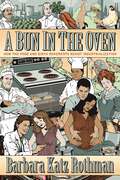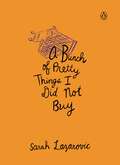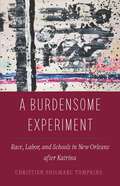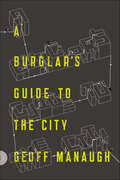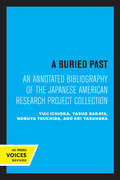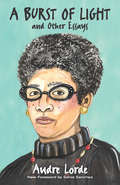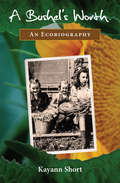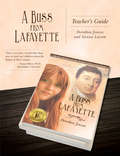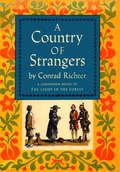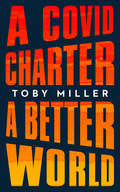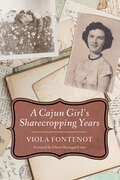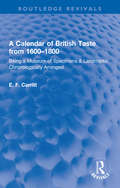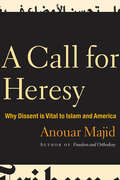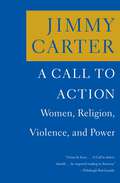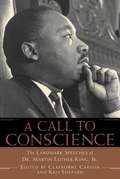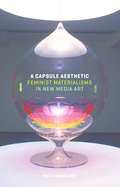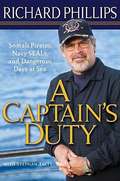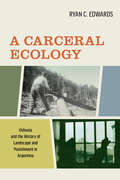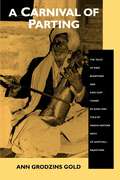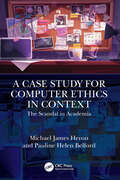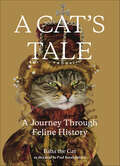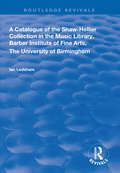- Table View
- List View
A Bun in the Oven: How the Food and Birth Movements Resist Industrialization
by Barbara Katz RothmanThere are people dedicated to improving the way we eat, and people dedicated to improving the way we give birth. A Bun in the Oven is the first comparison of these two social movements. The food movement has seemingly exploded, but little has changed in the diet of most Americans. And while there’s talk of improving the childbirth experience, most births happen in large hospitals, about a third result in C-sections, and the US does not fare well in infant or maternal outcomes. In A Bun in the Oven Barbara Katz Rothman traces the food and the birth movements through three major phases over the course of the 20th century in the United States: from the early 20th century era of scientific management; through to the consumerism of Post World War II with its ‘turn to the French’ in making things gracious; to the late 20th century counter-culture midwives and counter-cuisine cooks. The book explores the tension throughout all of these eras between the industrial demands of mass-management and profit-making, and the social movements—composed largely of women coming together from very different feminist sensibilities—which are working to expose the harmful consequences of industrialization, and make birth and food both meaningful and healthy. Katz Rothman, an internationally recognized sociologist named ‘midwife to the movement’ by the Midwives Alliance of North America, turns her attention to the lessons to be learned from the food movement, and the parallel forces shaping both of these consumer-based social movements. In both movements, issues of the natural, the authentic, and the importance of ‘meaningful’ and ‘personal’ experiences get balanced against discussions of what is sensible, convenient and safe. And both movements operate in a context of commercial and corporate interests, which places profit and efficiency above individual experiences and outcomes. A Bun in the Oven brings new insight into the relationship between our most intimate, personal experiences, the industries that control them, and the social movements that resist the industrialization of life and seek to birth change.
A Bunch of Pretty Things I Did Not Buy
by Sarah LazarovicA witty, gracious, and charmingly illustrated anti-consumer manifestoLike most people, Sarah Lazarovic covets beautiful things. But rather than giving in to her impulse to spend and acquire, Sarah spent a year painting the objects she wanted to buy instead.Based on a visual essay that was first published on The Hairpin, A Bunch of Pretty Things I Did Not Buy is a beautiful and witty take on the growing “slow shopping” movement. Sarah is a well-known blogger and illustrator, and she writes brilliantly without preaching or guilt-tripping. Whether she’s trying to justify the purchase of yet another particleboard IKEA home furnishing, debating the pros and cons of leg warmers or calculating the per-day usage cost of big-ticket items, Sarah’s poignant musings will resonate with any reader who’s ever been susceptible to an impulse buy.
A Burdensome Experiment: Race, Labor, and Schools in New Orleans after Katrina (Atelier: Ethnographic Inquiry in the Twenty-First Century #18)
by Christien Philmarc TompkinsA free ebook version of this title is available through Luminos, University of California Press's Open Access publishing program. Visit www.luminosoa.org to learn more. In the aftermath of Hurricane Katrina, the New Orleans public school board fired nearly 7,500 teachers and employees. In the decade that followed, the city created the first urban public school system in the United States to be entirely contracted out to private management. Veteran educators, collectively referred to as the "backbone" of the city's Black middle class, were replaced by younger, less experienced, white teachers who lacked historical ties to the city. In A Burdensome Experiment, Christien Philmarc Tompkins argues that the privatization of New Orleans schools has made educators into a new kind of racialized worker. As school districts across the nation backslide on school integration, Tompkins asks, who exactly deserves to teach our children? The struggle over this question exposes the inherent antiblackness of charter school systems and the unequal burdens of school choice.
A Burglar's Guide to the City
by Geoff ManaughA “deeply researched and brilliantly written” blueprint to the criminal possibilities in the world all around us (Warren Ellis, author of Gun Machine).At the core of A Burglar’s Guide to the City is an unexpected and thrilling insight: how any building transforms when seen through the eyes of someone hoping to break into it. Studying architecture the way a burglar would, Geoff Manaugh takes readers through walls, down elevator shafts, into panic rooms, and out across the rooftops of an unsuspecting city.Encompassing nearly two thousand years of heists and break-ins, the book draws on the expertise of reformed bank robbers, FBI special agents, private security consultants, the LAPD Air Support Division, and architects past and present.Whether discussing how to pick padlocks, climb the walls of high-rise apartments, find gaps in a museum’s surveillance routine, or discuss home invasions in ancient Rome, A Burglar’s Guide to the City ensures readers will never enter a bank again without imagining how to loot the vault, or walk down the street without planning the perfect getaway.Praise for A Burglar’s Guide to the City“This burglar’s guide isn’t for ordinary smash-and-grab burglars, it’s for the rest of us—who steal in, steal out, and get away with glorious dreams. A spectacularly fun read.” —Robert Krulwich, cohost of Radiolab“Who knew that urban studies could be so riveting? Geoff Manaugh excels at finding new, illicit, and fresh angles on a subject as loved as it is overexposed—the city. In his new book, elegant, perverse, sinuous supervillains maneuver and master the city like parkour champions. I see the TV series already.” —Paola Antonelli, design curator, MoMA
A Buried Past: An Annotated Bibliography of the Japanese American Research Project Collection
by Yuji Ichioka Yasuo Sakata Nobuya TsuchidaThis title is part of UC Press's Voices Revived program, which commemorates University of California Press’s mission to seek out and cultivate the brightest minds and give them voice, reach, and impact. Drawing on a backlist dating to 1893, Voices Revived makes high-quality, peer-reviewed scholarship accessible once again using print-on-demand technology. This title was originally published in 1974.
A Burst of Light
by Audre LordeIn 1984, feminist poet Lorde learned that her breast cancer had metastasized to the liver. The moving title section comprises a series of journal excerpts that both frighten and inspire: choosing not to have a biopsy, she instead treats the disease with a stay at the homeopathic Lukas Klinik in Switzerland, consultations with more traditional medical specialists and alternatives like self-hypnosis. Her lifelong battle against racism, sexism and homophobia has armed her with the resilience to resist cancer, and thus "A Burst of Light" becomes not only a chronicle of Lorde's fight against disease, but a view of one woman's sparring with injustice, whether the oppressors are the South African police, the American government or malignant cells within her own body. Although it rings out with passion, anger and hope, the lengthy title piece is sometimes rambling and repetitive. In refreshing contrast, three outstanding essays on black lesbianism, the parallels between South Africa and the United States, and lesbian parenting are politically specific and pithy. -Publishers Weekly
A Burst of Light: and Other Essays
by Audre Lorde Sonia Sanchez"The self-described black feminist lesbian mother poet used a mixture of prose, theory, poetry, and experience to interrogate oppressions and uplift marginalized communities. She was one of the first black feminists to target heteronormativity, and to encourage black feminists to expand their understanding of erotic pleasure. She amplified anti-oppression, even as breast cancer ravaged her ailing body." — Evette Dionne, Bustle Magazine Winner of the 1988 Before Columbus Foundation National Book Award, this path-breaking collection of essays is a clarion call to build communities that nurture our spirit. Lorde announces the need for a radical politics of intersectionality while struggling to maintain her own faith as she wages a battle against liver cancer. From reflections on her struggle with the disease to thoughts on lesbian sexuality and African-American identity in a straight white man's world, Lorde's voice remains enduringly relevant in today's political landscape. Those who practice and encourage social justice activism frequently quote her exhortation, "Caring for myself is not self-indulgence, it is self-preservation, and that is an act of political warfare." In addition to the journal entries of "A Burst of Light: Living with Cancer," this edition includes an interview, "Sadomasochism: Not About Condemnation," and three essays, "I Am Your Sister: Black Women Organizing Across Sexualities," "Apartheid U.S.A.," and "Turning the Beat Around: Lesbian Parenting 1986," as well as a new Foreword by Sonia Sanchez. "When I don't know what to do, I turn to the Lorde." — Alexis Pauline Gumbs, Bitch Media
A Bushel's Worth
by Kayann ShortIn this love story of land and family, Kayann Short explores her farm roots from her grandparents' North Dakota homesteads to her own Stonebridge Farm, an organic, community-supported farm on the Colorado Front Range where small-scale, local agriculture borrows lessons of the past to cultivate sustainable communities for the future."A Bushel's Worth is my favorite kind of nonfiction. Not only is it about many topics close to my heart-gardening, food, family-it is a beautifully told story, and a love story at that, centered around the love of a couple, their love for the land, and a community's love for a way of life. This book forever changed my perspective and awareness as I 'walk out' in my own garden."--Katrina Kittle, author, The Blessings of the Animals"A heartfelt meditation on farm, food, and family. A Bushel's Worth tells a love story of the land and a life spent caring for it."-Hannah Nordhaus, author, The Beekeeper's Lament: How One Man and Half a Billion Honeybees Help Feed America"Kayann Short shares a passionate and often lyrical account of how she and her husband John took their first brave steps toward revitalizing a small Colorado farm and with it their lives and the community they drew around them. This is a book about how agriculture continues to create culture when it is practiced with generosity, creativity and attention. It is an inspiring story, a gift for all of us, both on and off the farm, who are trying to learn how to slow down our frenzied lives so that we may give ourselves to what really matters."-Gregory Spaid, author, Grace: Photographs of Rural America"With a companionable mix of literary and earthy sensibilities, Kayann Short writes with graceful, ferocious attentiveness [and] finds reassurance for herself and her modern family in "the old wisdom of the fields."-John Calderazzo, author, Rising Fire: Volcanoes & Our Inner Lives"[A] beautifully written and sensually rich 'ecobiography' of farm life...A Bushel's Worth is a loving natural history - of a farm, a marriage, and a way of life that has changed interestingly and dramatically over just a few generations."-Jane Shellenberger, author, Organic Gardener's Companion: Growing Vegetables in the West"The book is a substantial meal...as much about growing community as it is about growing food, and it leaves the reader with a generous bushel of instruction and inspiration on both counts."-Susan Becker, Director, Boulder Public Library Oral History Program"A Bushel's Worth: An Ecobiography eloquently depicts humans and nature coexisting and mutually benefiting not only in theory, but in actuality...where people treat each other respectfully as they gently work on and with the land."-Shelly Eberly, National Outings Leader, Sierra Club
A Buss From Lafayette Teacher's Guide
by Dorothea Jensen Sienna LarsonThis guide is for A Buss From Lafayette, Dorothea Jensen's award-winning (Literary Classics, Purple Dragonfly, eLit Awards, etc.) historical novel for young readers. This guide contains bulletin board ideas, vocabulary exercises, varied student handouts, puzzles, games, reading comprehension quizzes, discussion questions, and both individual and class projects. Its cross-curricular activities include language arts/reading, social studies, mathematics, health/safety, art, music, dance, drama, recipes, and suggestions for real and virtual field trips. A full answer key is provided. The main topics covered are the American Revolution, Lafayette's role in our War of Independence, Lafayette's Farewell Tour of America in 1824-5, and everyday life and customs in rural America in the 1820s.
A COUNTRY OF STRANGERS
by Conrad RichterA "chronicle of a white girl captive of the Indians returned against her will to her white home . . . Her reception here, her rejection and that of her Indian son by her Caucasian father and sister . . . the conflicts of her Indian upbringing with the white way are related."
A COVID Charter, A Better World
by Toby MillerWith unprecedented speed, scientists have raced to develop vaccines to bring the COVID-19 pandemic under control and restore a sense of normalcy to our lives. Despite the havoc and disruption the pandemic has caused, it’s exposed exactly why we should not return to life as we once knew it. Our current profit-driven healthcare systems have exacerbated global inequality and endangered public health, and we must take this opportunity to construct a new social order that understands public health as a basic human right. A COVID Charter, A Better World outlines the steps needed to reform public policies and fix the structural vulnerabilities that the current pandemic has made so painfully clear. Leading scholar Toby Miller argues that we must resist neoliberalism’s tendency to view health in terms of individual choices and market-driven solutions, because that fails to preserve human rights. He addresses the imbalance of geopolitical power to explain how we arrived at this point and shows that the pandemic is more than just a virus—it’s a social disease. By examining how the U.S., Britain, Mexico, and Colombia have responded to the COVID-19 crisis, Miller investigates corporate, scientific, and governmental decision-making and the effects those decisions have had on disadvantaged local communities. Drawing from human rights charters ratified by various international organizations, he then proposes a COVID charter, calling for a new world that places human lives above corporate profits.
A Cajun Girl's Sharecropping Years
by Viola FontenotWinner of the 2019 Humanities Book of the Year from the Louisiana Endowment for the HumanitiesToday sharecropping is history, though during World War II and the Great Depression sharecropping was prevalent in Louisiana's southern parishes. Sharecroppers rented farmland and often a small house, agreeing to pay a one-third share of all profit from the sale of crops grown on the land. Sharecropping shaped Louisiana's rich cultural history, and while there have been books published about sharecropping, they share a predominately male perspective. In A Cajun Girl's Sharecropping Years, Viola Fontenot adds the female voice into the story of sharecropping.Spanning from 1937 to 1955, Fontenot describes her life as the daughter of a sharecropper in Church Point, Louisiana, including details of field work as well as the domestic arts and Cajun culture. The account begins with stories from early life, where the family lived off a gravel road near the woods without electricity, running water, or bathrooms, and a mule-drawn wagon was the only means of transportation. To gently introduce the reader to her native language, the author often includes French words along with a succinct definition. This becomes an important part of the story as Fontenot attends primary school, where she experienced prejudice for speaking French, a forbidden and punishable act. Descriptions of Fontenot's teenage years include stories of going to the boucherie; canning blackberries, figs, and pumpkins; using the wood stove to cook dinner; washing and ironing laundry; and making moss mattresses. Also included in the texts are explanations of rural Cajun holiday traditions, courting customs, leisure activities, children's games, and Saturday night house dances for family and neighbors, the fais do-do.
A Calendar of British Taste from 1600–1800: Being a Museum of Specimens & Landmarks Chronologically Arranged (Routledge Revivals)
by E. F. CarrittFirst published in 1948, A Calendar of British Taste from 1600–1800 gives a picture of British taste in art, nature and manners during the centuries 1600 to 1800. The book is an anthology from novels, poetry, letters, essays, advertisements and diaries of the period. It is arranged chronologically and covers a wide range of topics including architecture, gardens, manners, music, nature, painting, poetry, sculpture, and the stage. Key authors drawn upon include Pepys, Dryden, Pope, Horace Walpole, Dr. Johnson, Fanny Burney, Cowper, and Wordsworth. Through an extensive and panoramic view, the book traces the development and changes in taste over time. A Calendar of British Taste from 1600–1800 is ideal for anyone with an interest in the cultural and social history of Britain.
A Call for Heresy: Why Dissent Is Vital to Islam and America
by Anouar MajidA Call for Heresy discovers unexpected common ground in one of the most inflammatory issues of the twenty-first century: the deepening conflict between the Islamic world and the United States. Moving beyond simplistic answers, Anouar Majid argues that the Islamic world and the United States are both in precipitous states of decline because, in each, religious, political, and economic orthodoxies have silenced the voices of their most creative thinkers—the visionary nonconformists, radicals, and revolutionaries who are often dismissed, or even punished, as heretics.The United States and contemporary Islam share far more than partisans on either side admit, Majid provocatively argues, and this &“clash of civilizations&” is in reality a clash of competing fundamentalisms. Illustrating this point, he draws surprising parallels between the histories and cultures of Islam and the United States and their shortsighted suppression of heresy (zandaqa in Arabic), from Muslim poets and philosophers like Ibn Rushd (known in the West as Averroës) to the freethinker Thomas Paine, and from Abu Bakr Razi and Al-Farabi to Thomas Jefferson and Abraham Lincoln. He finds bitter irony in the fact that Islamic culture is now at war with a nation whose ideals are losing ground to the reactionary forces that have long condemned Islam to stagnation.The solution, Majid concludes, is a long-overdue revival of dissent. Heresy is no longer a contrarian&’s luxury, for only through encouraging an engaged and progressive intellectual tradition can the nations reverse their decline and finally work together for global justice and the common good of humanity.Anouar Majid is founding chair and professor of English at the University of New England and the author of Freedom and Orthodoxy: Islam and Difference in the Post-Andalusian Age; Unveiling Traditions: Postcolonial Islam in a Polycentric World; and Si Yussef, a novel. He is also cofounder and editor of Tingis, a Moroccan-American magazine of ideas and culture.
A Call to Action: Women, Religion, Violence, and Power
by Jimmy CarterIn the highly acclaimed bestselling A Call to Action, President Jimmy Carter addresses the world’s most serious, pervasive, and ignored violation of basic human rights: the ongoing discrimination and violence against women and girls.President Carter was encouraged to write this book by a wide coalition of leaders of all faiths. His urgent report covers a system of discrimination that extends to every nation. Women are deprived of equal opportunity in wealthier nations and “owned” by men in others, forced to suffer servitude, child marriage, and genital cutting. The most vulnerable and their children are trapped in war and violence. A Call to Action addresses the suffering inflicted upon women by a false interpretation of carefully selected religious texts and a growing tolerance of violence and warfare. Key verses are often omitted or quoted out of context by male religious leaders to exalt the status of men and exclude women. And in nations that accept or even glorify violence, this perceived inequality becomes the basis for abuse. Carter draws upon his own experiences and the testimony of courageous women from all regions and all major religions to demonstrate that women around the world, more than half of all human beings, are being denied equal rights. This is an informed and passionate charge about a devastating effect on economic prosperity and unconscionable human suffering. It affects us all.
A Call to Conscience: The Landmark Speeches of Dr. Martin Luther King, Jr.
by Clayborne Carson Kris Shepard Andrew YoungThis companion volume to "A Knock At Midnight: Inspiration from the Great Sermons of Rev. Martin Luther King, Jr". includes the text of his most well-known oration, "I Have a Dream", his acceptance speech for the Nobel Peace Prize, and "Beyond Vietnam", a powerful plea to end the ongoing conflict. Includes contributions from Rosa Parks, Aretha Franklin, the Dalai Lama, and many others.
A Call to Farms: Reconnecting To Nature, Food, And Community In A Modern World
by Jennifer GraysonHope for the future lies with a new generation of regenerative farmers. Within a decade, nearly half of all American farmland will change hands as an older generation of farmers steps aside. In their place, a groundswell of new growers will face numerous challenges, including soil degradation, insufficient income, and investors devouring farmland at a staggering pace. These new farmers are embracing regenerative agriculture—the holistic approach to growing food that restores the soil and biodiversity—in the movement to reclaim our health and the planet’s. But can their efforts help reverse an epidemic of diet-related disease, food inequality, and even climate change? To answer that question and more, award-winning journalist Jennifer Grayson embedded herself in a groundbreaking farmer training program, then embarked on this investigative journey. The diverse array of farmers, graziers, and food activists whom she profiles here are working toward better, more sustainable foodways for all. From a one-acre market garden in Oregon to activists reviving food sovereignty in South Carolina, A Call to Farms tells the captivating story of these new agrarians finding hope and purpose in reconnecting to the land and striving to improve the future of American food.
A Capsule Aesthetic: Feminist Materialisms in New Media Art
by Kate MondlochHow new media art informed by feminism yields important and original insights about interacting with technologies In A Capsule Aesthetic, Kate Mondloch examines how new media installation art intervenes in the fields of technoscience and new materialism, showing how three diverse artists—Pipilotti Rist, Patricia Piccinini, and Mariko Mori—contribute to the urgent conversation about everyday technology and the ways it constructs our bodies. A Capsule Aesthetic establishes the unique insights that feminist theory offers to new media art and new materialisms, offering a fuller picture of human–nonhuman relations. In-depth readings of works by Rist, Piccinini, and Mori explore such questions as the role of the contemporary art museum in our experience of media art, how the human is conceived of by biotechnologies, and how installation art can complicate and enrich contemporary science&’s understanding of the brain. With vivid, firsthand descriptions of the artworks, Mondloch takes the reader inside immersive installation pieces, showing how they allow us to inhabit challenging theoretical concepts and nonanthropomorphic perspectives. Striving to think beyond the anthropocentric and fully consider the material world, A Capsule Aesthetic brings new approaches to questions surrounding our technology-saturated culture and its proliferation of human-to-nonhuman interfaces.
A Captain's Duty: Somali Pirates, Navy SEALs, and Dangerous Days at Sea
by Richard Phillips Stephan TaltyIt was just another day on the job for Richard Phillips, captain of the Maersk Alabama, the United States-flagged cargo ship that was carrying, among other things, food and agricultural materials for the World Food Program. That all changed when armed Somali pirates boarded the ship. The pirates didn't expect the crew to fight back, nor did they expect Captain Phillips to offer himself as hostage in exchange for the safety of his crew. Thus began the tense five-day standoff that ended in a daring high-seas rescue when U.S. Navy SEALs opened fire and picked off three of the captors. "It never ends like this," Captain Phillips said. And he's right. "A Captain's Duty" tells the life-and-death drama of the career sailor who was held captive on a tiny lifeboat off Somalia's anarchic, gun-plagued shores. A story of adventure and courage it provides the intimate details of this high-seas hostage-taking--the unbearable heat, the death threats, the mock executions, and the escape attempt. When the pirates boarded his ship, Captain Phillips put his experience into action, doing everything he could to safeguard his crew. And when he was held captive by the pirates, he marshaled all his resources to ensure his own survival, withstanding intense physical hardship and an escalating battle of wills. This was it: the moment where training meets instinct, where character is everything. Richard Phillips was ready.
A Carceral Ecology: Ushuaia and the History of Landscape and Punishment in Argentina
by Ryan C. EdwardsCloser to Antarctica than to Buenos Aires, the port town of Ushuaia, Argentina is home to a national park as well as a museum that is housed in the world’s southernmost prison. Ushuaia’s radial panopticon operated as an experimental hybrid penal colony and penitentiary from 1902 to 1947, designed to revolutionize modern prisons globally. A Carceral Ecology offers the first comprehensive study of this notorious prison and its afterlife, documenting how the Patagonian frontier and timber economy became central to ideas about labor, rehabilitation, and resource management. Mining the records of penologists, naturalists, and inmates, Ryan C. Edwards shows how discipline was tied to forest management, but also how inmates gained situated geographical knowledge and reframed debates on the regeneration of the land and the self. Bringing a new imperative to global prison studies, Edwards asks us to rethink the role of the environment in carceral practices as well as the impact of incarceration on the natural world.
A Career in Radio: Understanding the Key Building Blocks
by Sayed Mohammad AmirThis book gives an overview of the development, significance, and impact of radio as a medium of mass communication in modern society. It provides a thorough understanding of the various wings and functionaries of the radio industry. The book also covers aspects of commercial radio, the basics of understanding the pulse of radio listeners, formatting radio programming, making an effective sales pitch and producing great commercials to exhaustive advice on presenting a show, appearing for interviews, and public speaking. It also gives insight into the changes brought in by technology in terms of traditional radio broadcasts, such as digital radio, highlighting its advancements in audio quality and the diversity of programming options available, and satellite radio, subscription-based services, and exclusive access to specialised programming. An outcome of the author’s vast experience of working as a radio jockey and programme manager for over 17 years, his book will be an ideal textbook for undergraduate and postgraduate students of journalism and mass communication, taking courses on radio, audio and podcasting, media production and digital media. Additionally, this book will be an invaluable companion to existing radio professionals as a resource-book for their professional development.
A Carnival of Parting: The Tales of King Bharthari and King Gopi Chand as Sung and Told by Madhu Natisar Nath of Ghatiyali, Rajasthan
by Ann Grodzins GoldMadhu Natisar Nath is a Rajasthani farmer with no formal schooling. He is also a singer, a musician, and a storyteller. At the center of A Carnival of Parting are Madhu Nath's oral performances of two linked tales about the legendary Indian kings, Bharthari of Ujjain and Gopi Chand of Bengal. Both characters, while still in their prime, leave thrones and families to be initiated as yogis—a process rich in adventure and melodrama, one that offers unique insights into popular Hinduism's view of world renunciation. Ann Grodzins Gold presents these living oral epic traditions as flowing narratives, transmitting to Western readers the pleasures, moods, and interactive dimensions of a village bard's performance.Three introductory chapters and an interpretive afterword, together with an appendix on the bard's language by linguist David Magier, supply A Carnival of Parting with a full range of ethnographic, historical, and cultural backgrounds. Gold gives a frank and engaging portrayal of the bard Madhu Nath and her work with him.The tales are most profoundly concerned, Gold argues, with human rather than divine realities. In a compelling afterword, she highlights their thematic emphases on politics, love, and death. Madhu Nath's vital colloquial telling of Gopi Chand and Bharthari's stories depicts renunciation as inevitable and interpersonal attachments as doomed, yet celebrates human existence as a "carnival of parting."
A Case Study for Computer Ethics in Context: The Scandal in Academia
by Michael James Heron Pauline Helen BelfordAimed at addressing the difficulties associated with teaching often abstract elements of technical ethics, this book is an extended fictional case study into the complexities of technology and social structures in complex organizations. Within this case study, an accidental discovery reveals that the algorithms of Professor John Blackbriar are not quite what they were purported to be. Over the course of 14 newspaper articles, a nebula of professional malpractice and ethical compromise is revealed, ultimately destroying the career of a prominent, successful academic.The case study touches on many topics relevant to ethics and professional conduct in computer science, and on the social structures within which computer science functions. Themes range from the growing influence of generative AI to the difficulties in explaining complex technical processes to a general audience, also touching on the environmental consequences of blockchain technology and the disproportionate gender impacts of Coronavirus. Each new revelation in the case study unveils further layers of complexity and compromise, leading to new technical and social issues that need to be addressed.Directly aimed at making ethics in the digital age accessible through the use of real-world examples, this book appeals to computer science students at all levels of the educational system, as well as making an excellent accompaniment to lecturers and course convenors alike.
A Cat's Tale: A Journey Through Feline History
by Paul Koudounaris Baba the CatA “fun, fanciful, and even informative” history of felines as revealed by a very learned tabby with a knack for hunting down facts (People).Since the dawn of civilization, felines have prowled alongside mankind as they expanded their territory and spread the myth of human greatness. And today, cats are peddled on social media as silly creatures here to amuse humans with their antics. But this is an absurd, self-centered fantasy. The true history of felines is one of heroism, love, tragedy, sacrifice, and gravitas. Not entirely convinced? Well, get ready, because Baba the Cat is here to set the record straight.Spanning almost every continent and thousands—yes, thousands—of years, Baba’s complex story of feline survival presents readers with a diverse cast of cats long forgotten: from her prehistoric feline ancestors and the ancient Egyptian cat goddess Bastet to the daring mariners at the height of oceanic discovery, key intellectuals in the Enlightenment period, revered heroes from World Wars I and II, and the infamous American tabbies. Baba, a talented model in addition to a scholar, goes beyond surface-level scratches, pairing her freshly unearthed research with a series of stunning costume portraits to bring history to life.A paws-on journey through the feline hall of fame, with in-depth research and four-legged testaments that will make you rethink who defines history, A Cat’s Tale is a one-of-a-kind chronicle that introduces readers to the illustrious ancestors of their closest companions and shows, once and for all, that cats know exactly what they’re doing.“Almost certainly the most unique cat history book ever published.” —Smithsonian Magazine
A Catalogue of the Shaw-Hellier Collection (Routledge Revivals)
by Ian LedshamIn this compilation, first published in 1999, Ian Ledsham compiles an extensive catalogue of the Shaw-Hellier Collection, complete with diagrams regarding how we use text.
